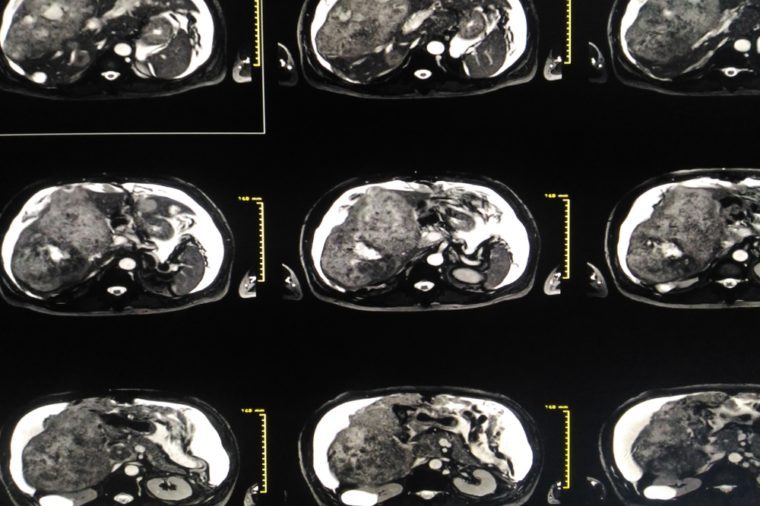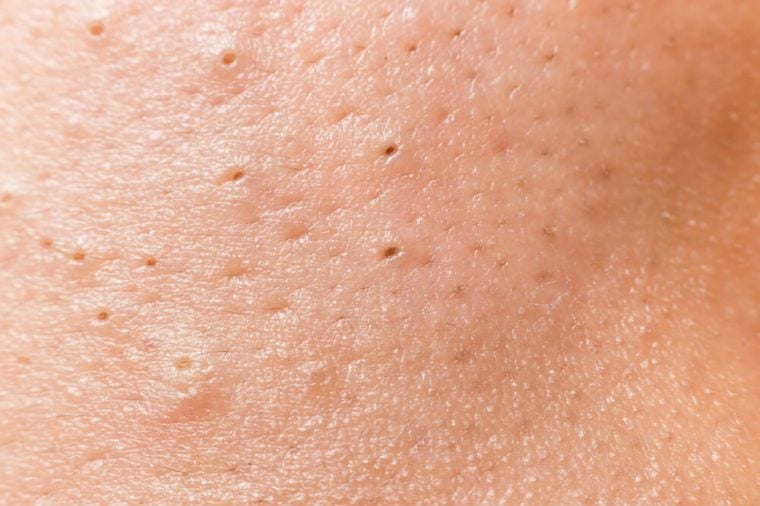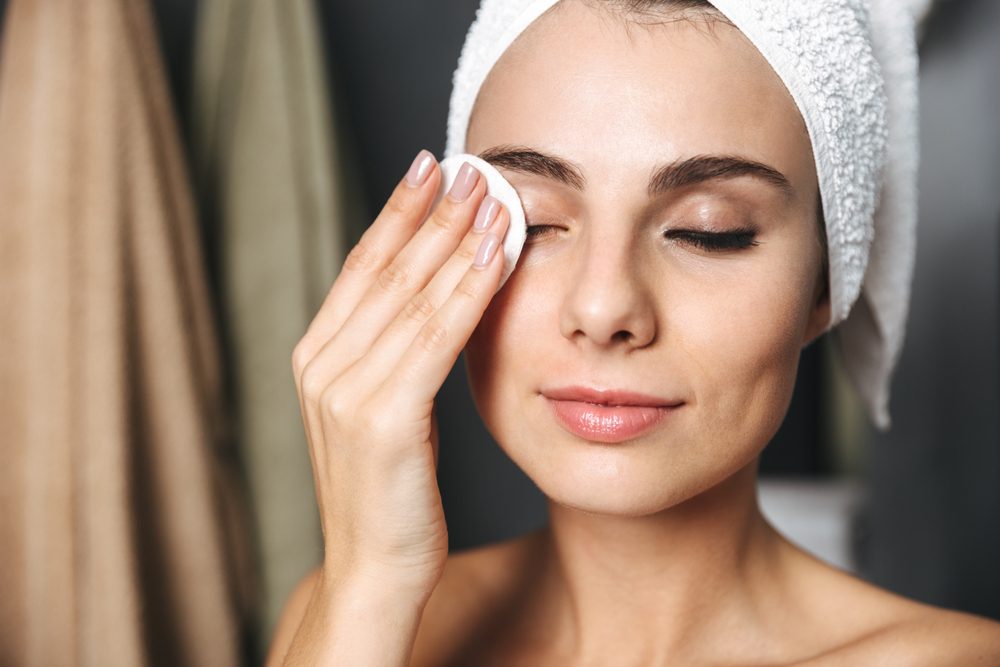
Skin cancer
This is one of the most common types of cancer, period. More people are diagnosed with skin cancer each year in the United States than all other cancers combined, according to the Skin Cancer Foundation. In fact, one in five Americans will develop skin cancer by the age of 70, and one person dies of melanoma, the potentially fatal form of skin cancer, every hour.
Prevention is basic: Protect your skin from the sun. Use a broad-spectrum sunscreen with an SPF of 15 or higher every day, avoid the sun when it is strongest (midday), check your skin every month, and get a professional skin exam at least once a year.
There are now a handful of new drugs that can potentially cure melanoma—the deadliest form of skin cancer—even after it has started to spread, says Mark D. Kaufmann, MD, a dermatologist at the Mount Sinai Hospital in New York City. He points to medications that target the immune system such as PD-1 and CTLA-4-blockers. A recently approved drug called Cemiplimab, will treat advanced squamous cell carcinoma (the second deadliest form); the FDA granted accelerated approval to Bavencio (avelumab) for another type of skin cancer called Merkel cell carcinoma (MCC). This is the first FDA-approved treatment for spreading MCC. Here are 12 signs of skin cancer you are probably ignoring.
Breast cancer
For women, this may be one of the scarier types of cancer: There will be about 266,120 new cases of invasive breast cancer diagnosed in the United States in 2018, according to the American Cancer Society. A woman’s average risk of developing breast cancer sometime in her life is about 12 percent. The good news? “Early detection is really saving lives,” says Laurie Margolies, MD, a radiologist and associate professor at Mount Sinai in New York City. Here are 50 everyday habits that may reduce your risk of developing breast cancer.
Some of the most exciting developments in treatment include the recognition that not all breast cancers are the same. “There are many different subtypes, and the more we know about an individual breast cancer, the more tailored our treatment can be,” Dr. Margolies says. Tailored treatments tend to have fewer side effects than other therapies because they zero in on specific cancer cells instead of launching a broader attack on all cells.
Lung cancer
This brutal disease is the leading cause of cancer death in men and women. In 2018, there will be about 234,030 new cases of lung cancer diagnosed in the United States, and 154,050 people will die from this disease, according to the American Cancer Society. The single biggest risk factor is no surprise, so don’t smoke—and if you do, quit by whatever means necessary.
Lung cancer screening remains extremely underutilized, says Nicholas Rohs, MD, a hematologist/oncologist at Mount Sinai Hospital in New York City. Low-dose CT scans can identify lung cancer when it’s in its most treatable forms. Screening doesn’t make sense for everyone, but for those at high risk it saves lives, he says. “If you are aged 55 to 80 and have smoked a pack or day for 30 years and you get screened, you are 20 percent less likely to die from lung cancer. Talk to your doctor to see if this type of screening is right for you.
It’s a whole new day when it comes to treating and beating lung cancer, he says. “Genomics has revolutionized the face of lung cancer. We can now subtype lung cancers and choose treatments based on specific characteristics of the tumor,” he explains. “Targeted therapies are oral, well-tolerated startlingly effective.” Here are 11 things about lung cancer doctors wish you knew.

Prostate cancer
The prostate is a walnut-sized gland just below the bladder in men; this is one of the types of cancer that is a leading cause of new cases in men—it’s also one of the top causes of cancer death for men, according to the American Cancer Society. Screening recommendations have changed over the years, says Bobby Liaw, MD an oncologist at Mount Sinai. Hospital in New York City. Blood tests that measure levels of prostate-specific antigen (PSA) were once broadly recommended for all men older than 50. “This caught tons and tons of prostate cancers but many were low-risk and not clinically relevant, so the pendulum swung far away from screening.” Today, screening is an individual decision based on a man’s risk factors. One welcome advancement: “We can test cancer cells to learn how or if the cancer will progress, and then use this information guide treatment options,” Dr. Liaw says. Learn the signs of cancer men are likely to ignore.
Colorectal cancer
This is a frustrating one for oncologists: Colorectal cancer is the second-leading cause of cancer-related deaths among men and women, yet nearly 30 percent of people who should be screened don’t make the appointment, reports the health advocacy group Fight Colorectal Cancer. Up to 60 percent of colorectal cancer deaths could be prevented with screening. The American Cancer Society estimates that there will 97,220 new cases of colon cancer and 43,030 new cases of rectal cancer diagnosed in the United States in 2018.
Due to an uptick in colon cancers seen in young people, the screening guidelines have changed. The American Cancer Society now recommends that people at average risk of colorectal cancer start regular screening at age 45. Colorectal cancer often starts as a polyp inside the colon or rectum; finding and removing these polyps can prevent colorectal cancer. (Yes, at-home colonoscopy kits are a thing.) Talk to your doctor about when and how you should be screened for colon cancer
Researchers are trying to define colorectal cancer sub-types based on genetic mutations in the cancer cells, how the cells look and behave, how fast the cells are dividing, which can help guide treatment choices.
Bladder cancer
In 2018, there will be about 81,190 new cases of bladder cancer diagnosed in the United States, comprising 4.7 percent of all new cancer cases, according to the National Cancer Institute. Smoking is a major risk factor: Although many people think “vaping” is safer than smoking, both e-cigarettes and traditional cigarettes are tied to an increased risk for bladder cancer, according to a study presented at an annual meeting of the American Urological Association. Bladder cancer usually affects more men than women, and it often develops in people over the age of 55. Make sure you know the 7 subtle signs of bladder cancer.
As is true with other types of cancer, bladder tumors come in different types; researchers are beginning to identify genetic changes in bladder cancer cells that may predict how aggressive the tumor is and how best to treat it, according to the American Cancer Society.
Endometrial cancer
This cancer falls under the umbrella category of uterine cancer because it develops in the lining of the uterus (the endometrium). About 63,230 new cases of uterine cancer will be diagnosed in 2018, according to the American Cancer Society, (ACS), and about 11,350 women will die from these cancers during the same year.
The average age of diagnosis is 60, but there has been a pronounced uptick of endometrial cancer diagnoses in younger women, says Shannon Westin, MD, a gynecologic oncologist at MD Anderson Cancer Center in Houston, Texas. This is likely due to the obesity epidemic. “Fat cells produce the female sex hormone estrogen, and all of this extra estrogen can build up in the body and increase endometrial cancer risk.” Losing weight may help lower risk for endometrial cancer.
Endometrial cancer is usually treatable with surgery when it’s caught early. Here are 7 signs that you may be at risk for endometrial cancer.
Kidney cancer
The incidence of kidney cancer has been slowly rising since the 1970s, but thankfully deaths from the cancer are declining, according to the Seattle Cancer Care Alliance. There will be 65,340 new cases of kidney cancer diagnosed in 2018, making up 3.8 percent of all new cancer cases in the United States, according to the National Cancer Institute.
While there are tests that can detect certain kidney cancers early, they’ve yet to be approved for people at average risk. Treatment for kidney cancer is improving: Several types of targeted therapies that zero in on molecular and genetic changes in cells that cause kidney cancer are typically the first-line treatment. Researchers are now looking at combining these drugs to see if they work better together, according to the American Cancer Society.
Liver cancer
 Liver cancer incidence has more than tripled since 1980, according to the American Cancer Society. The reasons appear to be the increase in obesity, diabetes, and untreated hepatitis, reports the Mayo Clinic. There will be about 42,220 new cases of liver cancer diagnosed in 2018, and about 30,200 people will die of this cancer. Researchers are studying ways to prevent or treat hepatitis infections before they cause liver cancers.
Liver cancer incidence has more than tripled since 1980, according to the American Cancer Society. The reasons appear to be the increase in obesity, diabetes, and untreated hepatitis, reports the Mayo Clinic. There will be about 42,220 new cases of liver cancer diagnosed in 2018, and about 30,200 people will die of this cancer. Researchers are studying ways to prevent or treat hepatitis infections before they cause liver cancers.
“From 2007 to 2017, there was only one FDA-approved drug for liver cancer. Now there are five, a sixth will likely be approved soon, and there is another on the horizon,” says Thomas Karasic, MD, an assistant professor of medicine in the Division of Hematology-Oncology at the University of Pennsylvania in Philadelphia. “Most of the new pills work by cutting off blood supply to the tumor,” he explains. “There is also excitement about two immunotherapy agents approved to treat liver cancer.” Immunotherapy drugs encourage immune cells to recognize and attack tumors by targeting key immune cell proteins. “We know that 20 percent of people with liver cancer who respond to immunotherapy do really well, but now that there are drugs approved we are trying them earlier and after surgery,” Dr. Karasic says. Here are the things that cancer doctors to do prevent cancer.
Pancreatic cancer
This gland in the abdomen helps you digest food and control blood sugar levels. About 55,440 people will be diagnosed with pancreatic cancer in 2018 and about 44,330 people will die from this cancer, according to the American Cancer Society. Pancreatic cancer has a reputation for being stealthy and lethal—doctors don’t typically catch it until it has begun to spread. “There has been a lot of ongoing research on blood marker and special at-risk populations such as those with a family history or precancerous pancreatic cysts,” Dr. Karasic says. “There are screening protocols for people with cysts and other high-risk patients in large academic places.” Catching it earlier represents the best chance for a cure. “New chemotherapy regimens are proving to be more effective than older ones, and the number of people who are cured by surgery and chemotherapy is drifting higher by a bit,” he says. Next, find out the 30 simple ways you can prevent cancer.
The post The 10 Most Common Types of Cancer in the United States appeared first on Reader's Digest.
from Reader's Digest http://bit.ly/2EilwMW
The 10 Most Common Types of Cancer in the United States Reader's Digest
 The number one skin sin is simply going to bed without giving your face a good wash. “Even if you do not wear makeup you should wash your face nightly,” says Desmond Shipp, MD, a dermatologist at The Ohio State University Wexner Medical Center. “Your skin is going through a repairing and rebuilding phase during the nighttime and debris such as dust, smoke, and skin care products can clog your pores leading to worsening acne.” Find out the 17 skin care tips that dermatologists use themselves.
The number one skin sin is simply going to bed without giving your face a good wash. “Even if you do not wear makeup you should wash your face nightly,” says Desmond Shipp, MD, a dermatologist at The Ohio State University Wexner Medical Center. “Your skin is going through a repairing and rebuilding phase during the nighttime and debris such as dust, smoke, and skin care products can clog your pores leading to worsening acne.” Find out the 17 skin care tips that dermatologists use themselves. When it comes to eye creams, Erum Ilyas, MD, a dermatologist at
When it comes to eye creams, Erum Ilyas, MD, a dermatologist at 
 “Always, always, always thoroughly remove the day’s buildup of makeup, sunscreen, and sebum from your face before going to bed,” says
“Always, always, always thoroughly remove the day’s buildup of makeup, sunscreen, and sebum from your face before going to bed,” says 

 Liver cancer incidence has more than tripled since 1980, according to the American Cancer Society. The reasons appear to be the increase in obesity, diabetes, and untreated hepatitis, reports the
Liver cancer incidence has more than tripled since 1980, according to the American Cancer Society. The reasons appear to be the increase in obesity, diabetes, and untreated hepatitis, reports the  According to a survey conducted by Jacksonville University researchers, wearing glasses in general increases how old people think you are, per
According to a survey conducted by Jacksonville University researchers, wearing glasses in general increases how old people think you are, per 

 After about four months, I had my second brain surgery to reattach my skull, and then I stopped doing rehab two months after that. I was pretty functional; speech took the longest time for me to regain, but my motor skills were fine. I did a duathlon seven months after my strokes and then completed a half marathon ten months post-stroke. I’m on blood thinners, and I always will be, and I’m fine with that.
After about four months, I had my second brain surgery to reattach my skull, and then I stopped doing rehab two months after that. I was pretty functional; speech took the longest time for me to regain, but my motor skills were fine. I did a duathlon seven months after my strokes and then completed a half marathon ten months post-stroke. I’m on blood thinners, and I always will be, and I’m fine with that. Perhaps the most obvious aspect of wintertime is the fact that it’s cold and dry—two characteristics that don’t bode well for youthful-looking skin. “The dry, harsh environmental conditions in wintertime often disrupts the skin’s equilibrium, causing redness and sensitivity,” says Ted Lain, MD, Austin-based dermatologist. “This sensitivity can make us susceptible skin conditions like rosacea, which tend to worsen in the winter and, over time, can lead to premature aging.” Here are
Perhaps the most obvious aspect of wintertime is the fact that it’s cold and dry—two characteristics that don’t bode well for youthful-looking skin. “The dry, harsh environmental conditions in wintertime often disrupts the skin’s equilibrium, causing redness and sensitivity,” says Ted Lain, MD, Austin-based dermatologist. “This sensitivity can make us susceptible skin conditions like rosacea, which tend to worsen in the winter and, over time, can lead to premature aging.” Here are